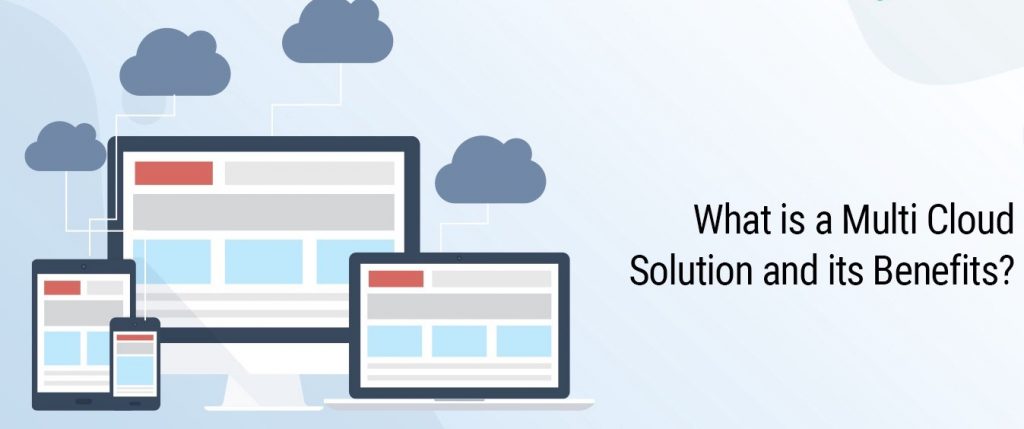Multi-Cloud is a model that uses two or more cloud computing and storage services in a single network architecture. Its environment can either be all-private, all-public, or a combination of both.

A multi-cloud model aims to eliminate the reliance on single cloud providers by distributing cloud assets, software, applications, etc across several cloud environments. One of the major reasons to adopt a multi-cloud model is to distribute computing resources so as to minimize the risks of downtime and data losses. They also tend to increase computing power and storage.
Read for Reference:- 4 Cloud Deployment Models; Their advantages and disadvantages
How to achieve a seamless Multi-Cloud Strategy?
Here’s what you should keep in mind while developing a multi-cloud strategy:
• Cloud Capabilities – Ask yourself if one cloud is able to meet the needs of your apps and developers, or do you require services from many providers?
• Geographic Availability – The Next question should be if you require multiple providers to comply with data sovereignty regulations? There’s no harm to ask if your data is in close enough proximity to deliver low-latency high-speed connectivity to public clouds because that’s one thing you need to look out for.
• Storage – Do you think you can scale storage independently? More important questions include asking yourself if your data is accessed by multiple clouds simultaneously and if your data is available when a compute instance or a container is deleted?
• Fee – We all know that public clouds charge a fee to get your data back out. This leads to surprising bills and stranded data.
• Management Overhead – The last question you can ask is, Can your staff use consistent tooling on-prem and across clouds to minimize management overhead?
Since we’ve been at it, let’s take a look at some of the benefits that multi-cloud can provide.
Flexibility
Every business is out to grow. So, with growth strategies in place, it’s important for organizations to evolve their cloud solutions too. This means you’ve got to look for multi-cloud solutions. Only then will you have the freedom to match your needs to solutions that fit and adapt to your requirements.
Scalability
Scalability is a known benefit of the Cloud Technology. By being on the multi-cloud, you can rapidly deliver critical resources across your business. You can also consequently scale faster as needed for peak demand or just provisioning faster solutions in case of business problems. This is why our advice is to diversify your portfolio which will result in lower susceptibility to faults and malfunctions.
Risk Mitigation
We understand you’re wondering that all vendors have multiple data centers within each geographic region where they host your infrastructure. But, this does not mean that outages won’t occur. And when they do, they’re likely to cause major disruptions.
Lower Latency
Businesses everywhere are focusing on ensuring that they serve their target audiences in the quickest way possible, only to yield profits. So, by adopting a multi-cloud model, you can choose a cloud provider, with its servers in vast regions and zones that are close to your customers. This will help you minimize latency and will improve user experiences.
Avoids Vendor Lock-In
The main risk of not having a multi-cloud solution is that enterprises become dependent on the technology offered by a particular provider. This acts as a constraint and to get over it, you need to inculcate multi-cloud solutions.
Innovation
Each cloud solution comes with its unique services. This is why maintaining a multi-cloud strategy becomes even more important. It opens up the possibility to leverage the best services within each cloud and incorporates them into your app.
Price/Performance Optimization
A significant advantage of multi-cloud is its ability to cut storage costs. Organizations can use a multi-cloud strategy to reduce cloud costs by using cheaper services from different cloud vendors.
To know more about cloud updates and how it operates, stay tuned with us on Facebook, Twitter, and LinkedIn.